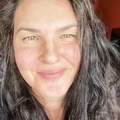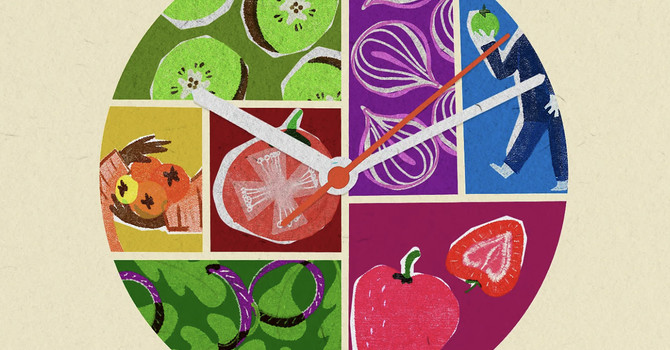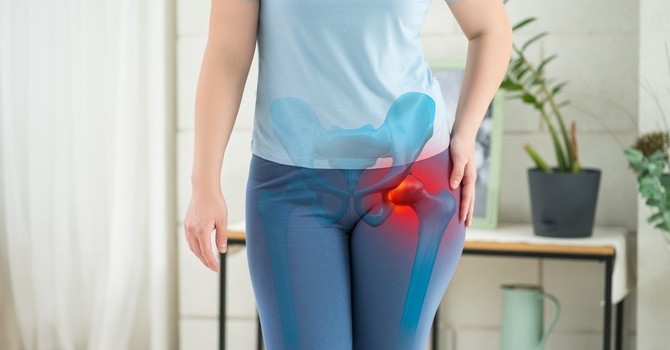AT Still, the founder of osteopathy was an American physician whose life was led by service and curiosity. Still was born in Virginia in 1828, the son of a physician/travelling Methodist preacher, who was often driven out of communities for his antislavery themed sermons. Still spent a large amount of his life living among the Shawnee tribespeople and learning from them.
He followed his father into medicine which at the time consisted of bloodletting and purging, amputations and opium. He lost his faith in his profession when he helplessly watched his wife die in childbirth, followed by his three children from meningitis.
Describing that time in his autobiography he wrote “…I was convinced there was something surer and stronger with which to fight sickness than drugs and I vowed to search until I found it”
He began studying alternative practices among them, homeopathy, magnetic healing and Shawnee bone setting. Through trial and error a new system began to develop.
He became a pariah among his peers but gradually word spread that this was a man whose methods worked for even the most hopeless cases. He began teaching, preferring each student to follow curiosity and experiment as he had rather than write textbooks. His books were more theory and principles rather than manuals instructing on technique. He opened a school and infirmary in 1895 treating 30,000 patients in its first year.
A lot of Still’s notes were written in Shawnee and he often answered questions in the Shawnee language before translating his reply into English. He instructed his students to “take an Indian look” which meant to put their hands on their patient.
Still’s open minded ways of learning and teaching traditional indigenous methods as one of the foundations to treating the body gave rise to a field of manual therapy that is now practised world wide. Acknowledgement of these roots of Osteopathy were sadly lacking for many decades as was acknowledgement of his own First Nations heritage from his Shawnee paternal grandfather.
I had high hopes of learning more about AT Still’s Indigenous heritage, about the Shawnee Tribe, about bone setting practices and about the roots of Indigenous manual therapy, but I found very little besides the articles I will link to at the end.
It is with profound sorrow to know that many Indigenous bodywork practices and traditions are lost, maybe forever, and the ones that are preserved, their origins underrepresented.
In order to preserve traditional practices we must acknowledge their origins. Shawnee and Cherokee bodywork practices encompassed energy work, visceral techniques as well as the bone-setting techniques that had been practiced for thousands of years before becoming the roots of Osteopathy.
AT Still’s autobiography starts off being about his upbringing and young adulthood on the American frontier before becoming a treatise against allopathic medicine. He presents the case for osteopathy as a superior alternative without describing how he came to discover this new form of treatment.
“If you think you should be a doctor...(I) will send you to the top of the tree of labels among the letter D, to read all about doctors, dopes, drinks, drugs and dead folks”
Frustratingly and bafflingly again from his autobiography: “How did I discover Osteopathy? Who was with me when I discovered it? Who assisted me in discovering it? I will give you one hundred dollars for the man’s photograph who has added one single thought to it.”
It is very apparent that Osteopathy was forged from deep grief and rage that came from his many losses and a sense of betrayal, that despite his profession, he was unable to prevent. He never felt compelled in his presentation of Osteopathy as a more comprehensive and cohesive healing system to reveal his teachers or sources.
He was not a great documenter of his methods so while he may have vaguely acknowledged in live teachings from where his methods came, it appears he was not concerned with lineage in the more traditional sense.
As time wore on and his school merged with modern medicine practises bringing the inclusion of pharmaceutical prescription (something he was strongly against), that acknowledgement was lacking, perhaps hidden or deemed irrelevant.
What Manual therapy has become with the teachings of Osteopathy is truly profound and has helped countless people. We are in a time where touch in healthcare is scarce so having access to the transformative power of therapeutic touch with a deep understanding of all systems and respect for the innate healing potential of the body is a true gift to the world.
As a practitioner I aspire to follow AT Still in being led by service and curiosity. I also aspire to go back to basics and, along with my colleagues, bring true understanding and responsibility to the origins and to the people who gave us these gifts and to honour them through our acknowledgement and gratitude.
I am happy to report that many schools and associations of Osteopathic therapy, and the modalities under its umbrella across North America, publicly acknowledge these roots.
In the depths of a time period of colonization, slavery, oppression and genocide AT Still blazed a trail of decolonizing the body by preferring and championing methods based on trusting the innate wisdom of our physical form. His work to bring this philosophy to the forefront of western medicine was ahead of its time. As part of this lineage we must bring the foundational indigenous roots back to the forefront of Manual Osteopathic Therapy.
He followed his father into medicine which at the time consisted of bloodletting and purging, amputations and opium. He lost his faith in his profession when he helplessly watched his wife die in childbirth, followed by his three children from meningitis.
Describing that time in his autobiography he wrote “…I was convinced there was something surer and stronger with which to fight sickness than drugs and I vowed to search until I found it”
He began studying alternative practices among them, homeopathy, magnetic healing and Shawnee bone setting. Through trial and error a new system began to develop.
He became a pariah among his peers but gradually word spread that this was a man whose methods worked for even the most hopeless cases. He began teaching, preferring each student to follow curiosity and experiment as he had rather than write textbooks. His books were more theory and principles rather than manuals instructing on technique. He opened a school and infirmary in 1895 treating 30,000 patients in its first year.
A lot of Still’s notes were written in Shawnee and he often answered questions in the Shawnee language before translating his reply into English. He instructed his students to “take an Indian look” which meant to put their hands on their patient.
Still’s open minded ways of learning and teaching traditional indigenous methods as one of the foundations to treating the body gave rise to a field of manual therapy that is now practised world wide. Acknowledgement of these roots of Osteopathy were sadly lacking for many decades as was acknowledgement of his own First Nations heritage from his Shawnee paternal grandfather.
I had high hopes of learning more about AT Still’s Indigenous heritage, about the Shawnee Tribe, about bone setting practices and about the roots of Indigenous manual therapy, but I found very little besides the articles I will link to at the end.
It is with profound sorrow to know that many Indigenous bodywork practices and traditions are lost, maybe forever, and the ones that are preserved, their origins underrepresented.
In order to preserve traditional practices we must acknowledge their origins. Shawnee and Cherokee bodywork practices encompassed energy work, visceral techniques as well as the bone-setting techniques that had been practiced for thousands of years before becoming the roots of Osteopathy.
AT Still’s autobiography starts off being about his upbringing and young adulthood on the American frontier before becoming a treatise against allopathic medicine. He presents the case for osteopathy as a superior alternative without describing how he came to discover this new form of treatment.
“If you think you should be a doctor...(I) will send you to the top of the tree of labels among the letter D, to read all about doctors, dopes, drinks, drugs and dead folks”
Frustratingly and bafflingly again from his autobiography: “How did I discover Osteopathy? Who was with me when I discovered it? Who assisted me in discovering it? I will give you one hundred dollars for the man’s photograph who has added one single thought to it.”
It is very apparent that Osteopathy was forged from deep grief and rage that came from his many losses and a sense of betrayal, that despite his profession, he was unable to prevent. He never felt compelled in his presentation of Osteopathy as a more comprehensive and cohesive healing system to reveal his teachers or sources.
He was not a great documenter of his methods so while he may have vaguely acknowledged in live teachings from where his methods came, it appears he was not concerned with lineage in the more traditional sense.
As time wore on and his school merged with modern medicine practises bringing the inclusion of pharmaceutical prescription (something he was strongly against), that acknowledgement was lacking, perhaps hidden or deemed irrelevant.
What Manual therapy has become with the teachings of Osteopathy is truly profound and has helped countless people. We are in a time where touch in healthcare is scarce so having access to the transformative power of therapeutic touch with a deep understanding of all systems and respect for the innate healing potential of the body is a true gift to the world.
As a practitioner I aspire to follow AT Still in being led by service and curiosity. I also aspire to go back to basics and, along with my colleagues, bring true understanding and responsibility to the origins and to the people who gave us these gifts and to honour them through our acknowledgement and gratitude.
I am happy to report that many schools and associations of Osteopathic therapy, and the modalities under its umbrella across North America, publicly acknowledge these roots.
In the depths of a time period of colonization, slavery, oppression and genocide AT Still blazed a trail of decolonizing the body by preferring and championing methods based on trusting the innate wisdom of our physical form. His work to bring this philosophy to the forefront of western medicine was ahead of its time. As part of this lineage we must bring the foundational indigenous roots back to the forefront of Manual Osteopathic Therapy.
Eleanor Baldwin, MOT
Sources:
https://www.atsu.edu/museum-of-osteopathic-medicine/museum-at-still
https://www.atsu.edu/museum-of-osteopathic-medicine/dr-stills-heritage-reflects-american-indian-ties
https://som.rowan.edu/documents/the-native-american-heritage-of-the-body-mind-spirit-paradigm-in-osteopathic-practices-international-journal-of-osteopathic-medicine-2.pdf
Still, A. T. (1897). Autobiography of Andrew T. Still With a History of the Discovery and Development of the Science of Osteopathy. Arno.

Eleanor Baldwin
RMT, Manual Osteopathic Therapist and Rapid Neurofascial Reset Practitioner
Contact Me



